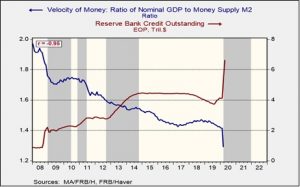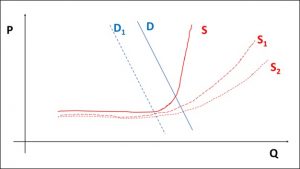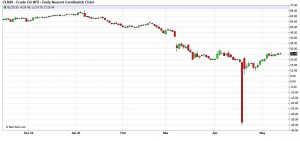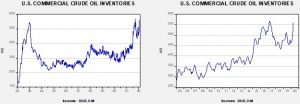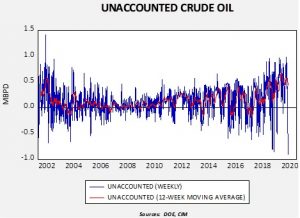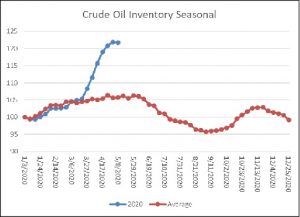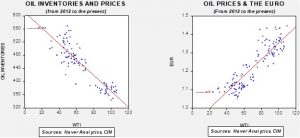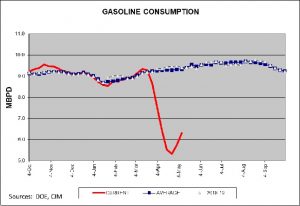by Bill O’Grady, Thomas Wash, and Patrick Fearon-Hernandez, CFA
[Posted: 9:30 AM EDT]
The generally positive trend in risk markets today comes as coronavirus restrictions continue to be lifted around the world and scientists continue to make progress in understanding the virus, coming up with treatments and developing vaccines. We review all the key news below.
Additionally, our next podcast episode, “The Lessons of History,” is now available. This episode examines the economic, market and social effects of earlier pandemics. Although the Black Death is mentioned, we focus on relatively recent events, including the Spanish influenza. One of our themes has been an impending reversal in the equality/efficiency cycle; in this podcast we discuss the potential that the pandemic could accelerate the shift to an equality phase.
COVID-19: Official data show confirmed cases have risen to 4,829,232 worldwide, with 319,031 deaths and 1,801,461 recoveries. In the United States, confirmed cases rose to 1,508,957, with 90,369 deaths and 283,178 recoveries. Here is the interactive chart from the Financial Times that allows you to compare cases and deaths among countries, scaled by population.
Virology
- As the aircraft carrier USS Theodore Roosevelt prepares to depart Guam following a two-week layover because of a COVID-19 outbreak, reports indicate some crew members have come down with the disease for a second time. Defense officials didn’t know whether some of the tests had produced false negative readings, or whether the sailors had contracted the virus after spending two weeks in quarantine in Guam. Either way, the news serves as a reminder that scientists still don’t know for sure whether being infected by the virus leads to future immunity.
- On the other hand, South Korean health officials found that a group of patients who tested positive a second time for the coronavirus hadn’t passed the disease on to others, lending credence to the possibility that the suspected relapses were a fluke of testing rather than the re-emergence of an active infection.
Real Economy
- In an important sign that people are becoming less fearful of social interaction, a new Axios/Ipsos poll showed only 64% of Americans now see a risk to their health, or wellbeing from in-person gatherings of friends and family outside their immediate household. That’s down from more than 80% in early April. Since the poll suggests consumers may be more willing to go out and spend than they were previously, the news should be positive for stocks going forward.
- In another positive note for the economy, the University of Notre Dame said it will not only bring its students back to campus for the fall semester, but it will also try to limit their travel exposure by starting the semester early on August 10th, ending it before Thanksgiving, and not starting the spring semester until January. Sadly, the university offered no indication that the move would help the football team finally win a national championship again, as alumni like me (Patrick) have been waiting for. GO IRISH!
- Federal health regulators released revised guidelines for reopening U.S. nursing homes, offering additional details and more stringent testing requirements than in an earlier draft.
- On a less positive note, New York said it is delaying payment of some $1.5 billion in grants and aid to the state’s counties, cities, colleges and schools because of the massive revenue decline caused by the coronavirus crisis. According to Governor Cuomo and State Budget Director Mujica, the state would ultimately have to cut spending by $10 billion unless federal financial aid is provided to help make up for the shortfall soon.
- Many commercial property owners are complaining that many national restaurant and cafe operators are asking to renegotiate their leases or extend their rent deferrals on grounds that social-distancing guidelines restricting them to 25% to 50% capacity have forced them to cut expenses to stay in business.
- In a survey of the chief executives and chairmen making up the European Round Table for Industry, more than 80% of respondents said the global economic recovery from the crisis will take between one and three years. The respondents said the top cost-cutting measures they’re taking to get through the crisis include postponing planned investments, cutting travel and freezing recruitment.
U.S. Policy Response
- Federal Reserve Chairman Jerome Powell and Treasury Secretary Steven Mnuchin will appear by videoconference before the Senate Banking Committee on Tuesday to testify on how they are handling $500 billion in emergency lending programs. The testimony could potentially include the announcement of new initiatives, or tweaks to the fiscal responses already put into place.
Foreign Policy Response
- German Chancellor Merkel and French President Macron proposed a new, €500-billion coronavirus recovery fund for the EU, boosting hopes for a coordinated European fiscal response to the pandemic. The funds would be raised by the European Commission borrowing on capital markets — which to date has only been done on a relatively modest scale — and would be used to provide grants funneled through the EU budget rather than loans to national governments. To be implemented, the plan would need to be approved by all 27 member states at an upcoming EU summit.
- The plan would move the EU farther toward common debt obligations than it has ever gone before, but it still falls short of the massive grant program funded by joint “coronabonds” that some hard-hit countries in the south have demanded.
- At the same time, the plan has already met resistance by some creditor nations north of the EU – including the Netherlands, Denmark and Sweden – who oppose any mutualization of debt and any reliance on grants instead of loans.
- Despite the plan’s uncertain future, it should be a positive for European stocks and bonds. Indeed, bonds issued by hard-hit, highly indebted countries such as Italy and Spain are rallying on the news so far today.
Political Impact
- U.S.-China tensions continue to worsen against the backdrop of the coronavirus crisis, highlighting the risk of renewed trade disruptions, political tensions, and further deglobalization like we’ve described many times in the past.
- At the WHO’s online annual meeting yesterday, more than 100 countries, including China, agreed to support an independent inquiry into the source of the pandemic and the early response to it. However, the resolution was far short of the intense scrutiny on China demanded by the Trump administration, as it omitted any reference to China and allowed for the inquiry to come only after the pandemic has been brought under control.
- Responding to the U.S. demand for a China-focused inquiry and its threat to leave the WHO unless the organization shows it is independent of China, the Chinese foreign ministry accused the Trump administration of a “smear” campaign designed to shift blame for its own handling of the crisis. In an effort to bolster its image, China also announced it would contribute an additional $1 billion to the WHO to support its work.
- All the same, many U.S. firms continue to ramp up their exposure to the Chinese market in spite of the risk of further U.S.-China “decoupling.”
- In Hungary, Prime Minister Orban is coming under fire for his response to the virus crisis. A key issue is his government’s April requirement that hospitals free up 36,000 of their publicly funded beds for potential COVID-19 cases, forcing the early discharge of many gravely ill people. Some of those people died, even as the total infections in Hungary has only reached about 3,500.



